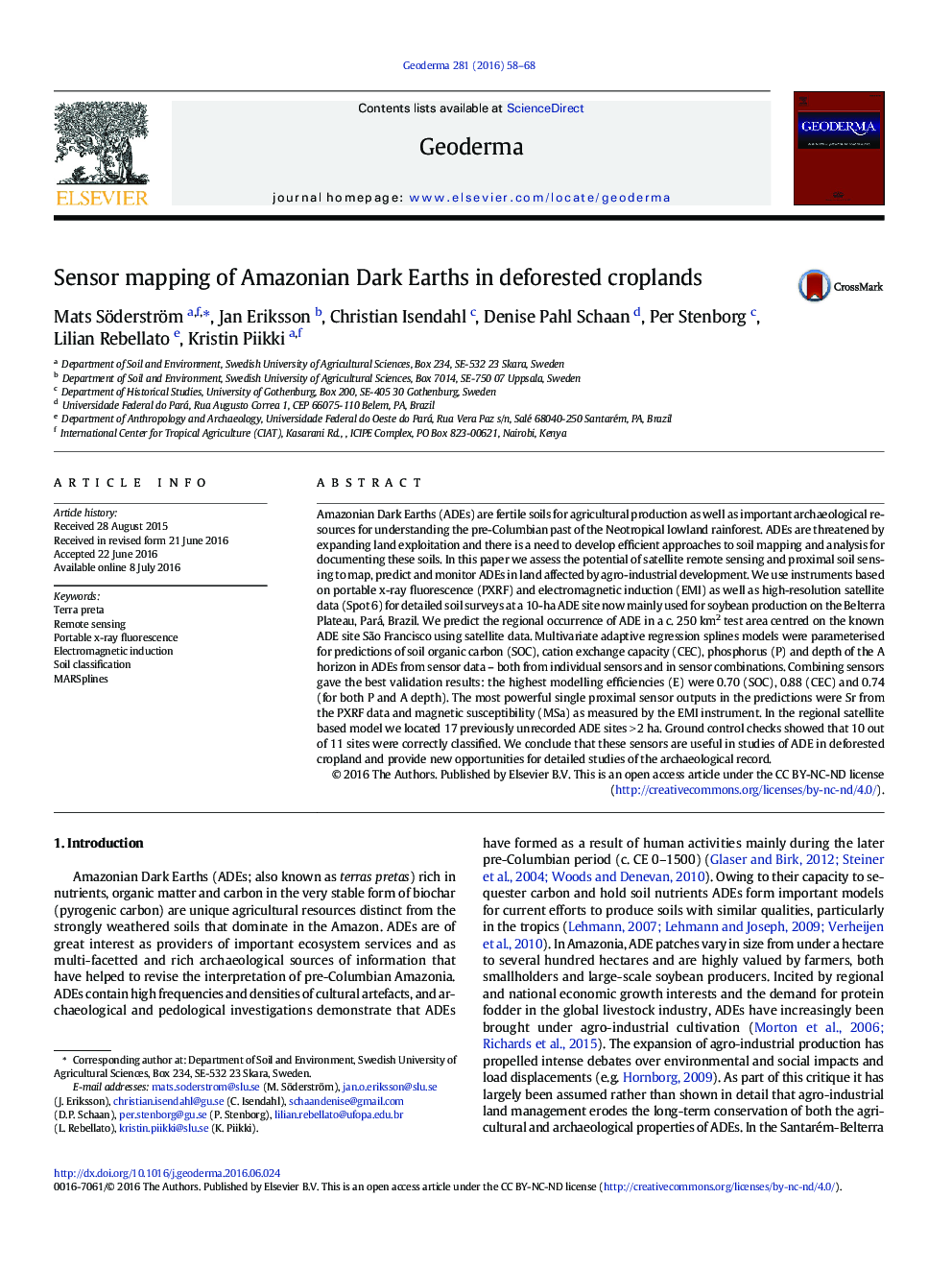| کد مقاله | کد نشریه | سال انتشار | مقاله انگلیسی | نسخه تمام متن |
|---|---|---|---|---|
| 6408250 | 1629436 | 2016 | 11 صفحه PDF | دانلود رایگان |
- We locate Amazonian Dark Earth (ADE) by predictive modelling of satellite data.
- PXRF and EMI sensors are used for rapid appraisal of key ADE properties.
- Combining remote and proximal sensors yields better predictions of ADE properties.
- We locate 17 not previously recorded ADE sites >Â 2Â ha in the study area.
- We estimate that 3% of an upland region in the Amazon is covered by ADE.
Amazonian Dark Earths (ADEs) are fertile soils for agricultural production as well as important archaeological resources for understanding the pre-Columbian past of the Neotropical lowland rainforest. ADEs are threatened by expanding land exploitation and there is a need to develop efficient approaches to soil mapping and analysis for documenting these soils. In this paper we assess the potential of satellite remote sensing and proximal soil sensing to map, predict and monitor ADEs in land affected by agro-industrial development. We use instruments based on portable x-ray fluorescence (PXRF) and electromagnetic induction (EMI) as well as high-resolution satellite data (Spot 6) for detailed soil surveys at a 10-ha ADE site now mainly used for soybean production on the Belterra Plateau, Pará, Brazil. We predict the regional occurrence of ADE in a c. 250 km2 test area centred on the known ADE site São Francisco using satellite data. Multivariate adaptive regression splines models were parameterised for predictions of soil organic carbon (SOC), cation exchange capacity (CEC), phosphorus (P) and depth of the A horizon in ADEs from sensor data - both from individual sensors and in sensor combinations. Combining sensors gave the best validation results: the highest modelling efficiencies (E) were 0.70 (SOC), 0.88 (CEC) and 0.74 (for both P and A depth). The most powerful single proximal sensor outputs in the predictions were Sr from the PXRF data and magnetic susceptibility (MSa) as measured by the EMI instrument. In the regional satellite based model we located 17 previously unrecorded ADE sites > 2 ha. Ground control checks showed that 10 out of 11 sites were correctly classified. We conclude that these sensors are useful in studies of ADE in deforested cropland and provide new opportunities for detailed studies of the archaeological record.
234
Journal: Geoderma - Volume 281, 1 November 2016, Pages 58-68
